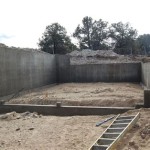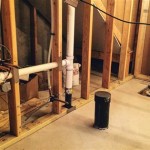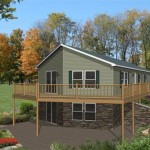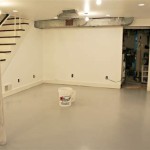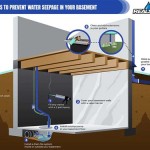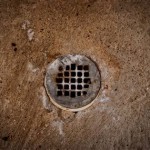Where Do My Basement Drains Go?
If you have a basement, you probably have drains. But where do they go? Most basement drains are connected to a sump pump, which is a pump that removes water from the basement and discharges it outside. Sump pumps are typically installed in a sump basin, which is a hole in the floor of the basement that collects water. The sump pump turns on when the water level in the basin reaches a certain height and pumps the water out of the basement.
There are two main types of sump pumps: submersible and pedestal. Submersible sump pumps are placed in the sump basin and are completely submerged in water. Pedestal sump pumps are placed outside of the sump basin and are connected to the sump basin by a pipe. Submersible sump pumps are more common than pedestal sump pumps because they are more efficient and less likely to clog.
The discharge pipe from the sump pump is typically connected to a drain tile system, which is a network of pipes that collects water from around the foundation of the house and directs it to the sump basin. Drain tile systems are typically installed when the house is built, but they can also be installed later if there is a problem with water in the basement.
If you have a basement, it is important to make sure that the sump pump is working properly. If the sump pump fails, water can accumulate in the basement and cause flooding. You should test the sump pump regularly by pouring water into the sump basin and making sure that the pump turns on and pumps the water out of the basement.
Here are some additional tips for keeping your basement dry:
- Make sure that the gutters and downspouts on your house are clean and free of debris. Clogged gutters and downspouts can cause water to overflow and seep into the basement.
- Grade the soil around your house so that it slopes away from the foundation. This will help to prevent water from pooling around the foundation and seeping into the basement.
- Seal any cracks in the foundation of your house. Cracks in the foundation can allow water to seep into the basement.
- Install a dehumidifier in your basement. A dehumidifier will help to remove moisture from the air and prevent mold and mildew from growing.
By following these tips, you can help to keep your basement dry and prevent water damage.

Basement Floor Drain Keeping Your Home Dry

Sewer Backup Basement Drain Flood Causes Cyclone Valves

Preventing Basement Floods In Old Homes Drain Tech

6 Types Of Basement Floor Drains

New Basement Drain Line Installation Water Guard Plumbing

A Complete Guide To Basement Drainage Groundworks

Where Do Basement Floor Drains Go A 1 Septic Tank Service Inc

Sewer Backup Basement Drain Flood Causes Cyclone Valves

What Is A Foundation Drain Mmsd

Why Do I Have Standing Water In My Basement Floor Drain B W

